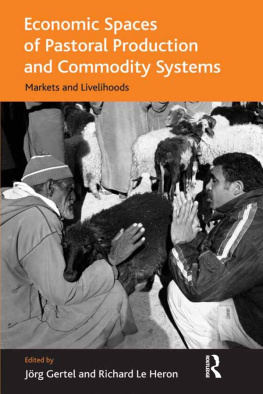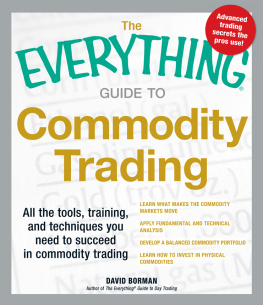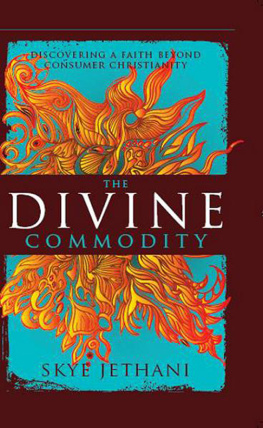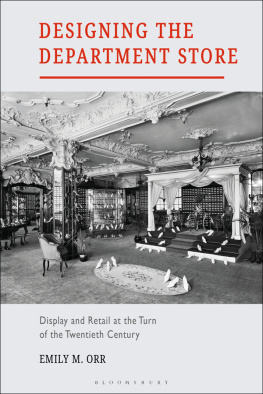On the Commodity Trail
On the Commodity Trail
The Journey of a Bargain Store Product from East to West
AlisonHulme
First published 2015 by Bloomsbury Academic
Published 2020 by Routledge
2 Park Square, Milton Park, Abingdon, Oxon OX14 4RN
605 Third Avenue, New York, NY 10017
Routledge is an imprint of the Taylor & Francis Group, an informa business
Alison Hulme, 2015
Alison Hulme has asserted her right under the Copyright, Designs and Patents Act, 1988, to be identified as Author of this work.
All rights reserved. No part of this book may be reprinted or reproduced or utilised in any form or by any electronic, mechanical, or other means, now known or hereafter invented, including photocopying and recording, or in any information storage or retrieval system, without permission in writing from the publishers.
Notice:
Product or corporate names may be trademarks or registered trademarks, and are used only for identification and explanation without intent to infringe.
British Library Cataloguing-in-Publication Data
A catalogue record for this book is available from the British Library.
Library of Congress Cataloging-in-Publication Data
A catalog record for this book is available from the Library of Congress.
Typeset by Deanta Global Publishing Services, Chennai, India
ISBN 13: 978-1-472-57285-1 (pbk)
ISBN 13: 978-1-472-57286-8 (hbk)
In memory of my father
Ken Hulme
(1938-2014)
Writer, singer, teacher, marathon runner, optimist and great eccentric.
CCP Chinese Communist Party
FDI Foreign Direct Investment
IPR Intellectual Property Rights
LA Los Angeles
MMM Modern Marketing Methods
PRC People's Republic of China
RNB Renmenbi (the Chinese currency)
SEZ Special Economic Zone
SOE State-Owned Enterprise
TVE Town and Village Enterprise
UK United Kingdom
US United States
USP Unique Selling Point
YRD Yangtze River Delta
My deep thanks go to Michael Dutton, John Hutnyk and Geir Sigursson. whose scholarship and advice have been a continual source of inspiration and encouragement.
My heartfelt appreciation also goes to Mark, Imrun, Sandra, Theo and my wonderful mother - June - whose friendship, love and support means everything.
Funding for much of fhe research carried out in this book came from the Arts and Humanities Research Council of the UK. My thanks go to them.
Thanks also to all those who agreed to share their experiences with me.
The inspiration for this book came from a casual conversation about pound stores in a pub in London's New Cross. I was, at the time, living just down the road in Catford and, surviving on a tiny income myself, was no stranger to the local bargain stores. As I recall, the conversation concerned Walter Benjamin's collected thoughts on the shopping arcades of Paris, specifically the ways in which he tended to describe the array of commodities on offer in a way that conjured a kind of chaotic dreamscape of darkened corners and half-seen glimpses of shiny curios. Totally flippantly (this was after all a social meeting over a pint), I laughingly suggested it might be an idea to do a kind of Arcades Project of pound stores, adding that 'the problem' with Benjamin's project was that it focused on the bijou objects of bourgeois Paris. 'What about an Arcades Project for the working class?' I asked, half tongue-in-cheek it should be said. It was a throwaway comment. Two hours and six beer mats of scribbled thoughts later, it was a book that had to be written.
Since Benjamin's day, thinking and writing about objects has become a micro-discipline in its own right. It is no longer the domain of the flaneur wandering through spaces of consumption and pondering on the meanings of their contents (albeit with great analytical flair); it has become an exercise in tracing the paths of things through time and space in the light of a, first colonizing, and now globalizing world. I discovered that what I would become in writing this book was a 'thingfollower', and that I would be following in the footsteps of other great thingfollowing studies such as Sidney Mintz's (1986) classic exploration of the journey of sugar, and more recently, Pietra Rivoli's (2006) T-shirts, Caroline Knowles' (2009) flip-flops and Ian Cook and Michelle Harrison's (2007) hot pepper sauces. My thing-following would track low-end commodities from factories in China to bargain stores in the West.
All of the above writers had taken Arjun Appadurai's call to 'follow the thing' head-on, in an attempt to understand the 'meanings inscribed in their forms, their uses, their trajectories' (Appadurai 1986: 5). Teamed with George Marcus's (1995) call to engage in multi-sited fieldwork, involving oneself in ethnographies in which commodities and their biographies are the organizing principles, this made for a vibrant new governing principle of 'doing Anthropology'. It also had the added benefit of tackling British Anthropology's age-old guilt in regard to its colonialist past, as allowing the commodity's trajectory to determine 'field sites' broke with more 'traditional' modes of anthropological enquiry in which so-called 'communities' were studied as bounded entities. It disenabled the accusation that anthropology continued to choose to go 'over there' and look at 'those exotic people' who live so differently from 'us'. Finally, the method was given a political imperative by taking on David Harvey's (1990) concern with allowing the thing to reveal everyday exploitations and reliance upon unseen others across the globe. This was part of a broad attempt on the part of Harvey to 'defetishize' the product by exposing its making. Such defetishizing projects have certainly had an impact - many keen ethical consumers quote Harvey as an influence. Personally, I felt (and still do feel) that merely shopping differentlyis a rather weak version of the outcomes Harvey's thought could potentially lead to and wanted to apply his theory in a way that did not simply berate terrible working conditions and profiteering practices, but tried to place a commodity chain within a wider vision of spaces and operations globally.
Despite the obvious common nature of our projects, the things I was following seemed to be part of commodity chains that did not display the same classic followability as my fellow thing-followers. The more I followed them, the more I found that the chains, just like the objects they produced, were somehow mutable and disposable. For example, while many of the key places along the chains were very established and historically ensconced in the chain (e.g. container ports, shipping routes, freight train lines), others seemed to be in constant flux. Areas of certain cities have suddenly and quickly become collection and sorting areas for raw materials; certain high streets have suddenly gained various bargain stores (especially since the recession hit); and new places of production are cropping up all the time. This mutability both leads to, and is a result of, the spontaneity of the players along the chain - waste pedlars who return to rural provinces, factory owners who switch production, bargain store owners who order stock from a variety of manufacturers and consumers who keep a tactical eye out for the 'genuine' bargains. In other words, constant










